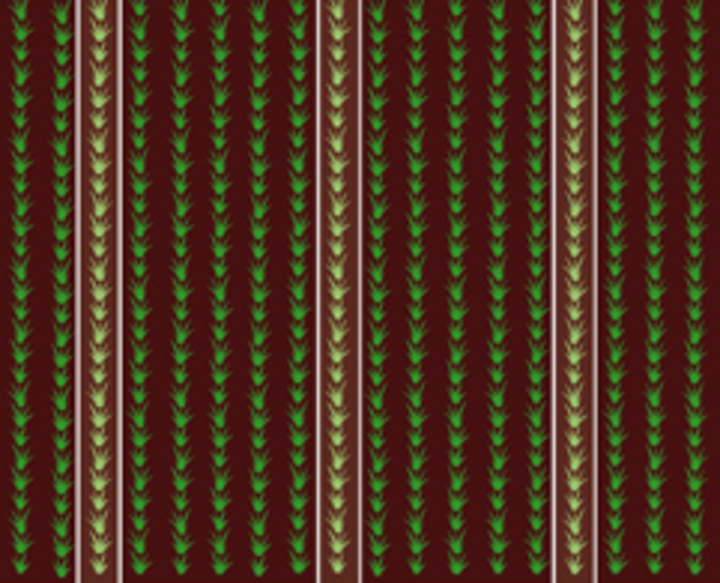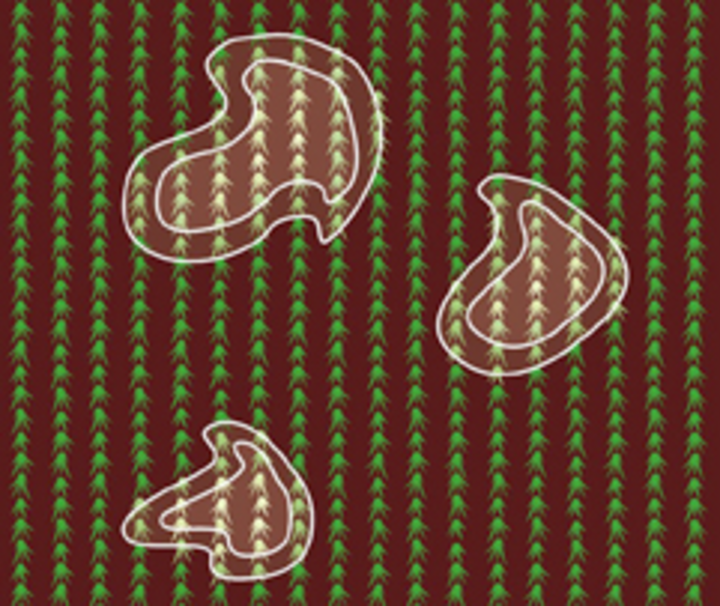The cool, wet, extended spring that much of Nebraska experienced has resulted in many phone calls and questions about poor emergence and unknown symptoms in both corn and soybean. While some emergence problems may be caused by soil borne pathogens such as Pythium, Phytophthora, Rhizoctonia, and Fusarium, many are due to abiotic (non-living) factors such as flooding, soil type, and agronomic practices. One of the easiest ways to predict whether the emergence issues are due to a soilborne pathogen(s) or agronomic factors is to look at where symptoms appear in the field.
Many factors can cause emergence issues. Answering the following questions can provide important information to guide management. It's important to remember, however, that there can be exceptions to the following guidelines.
Is it a large area, entire field, or just a few scattered plants?
Poor emergence due to abiotic factors can cover large parts of the field with some growers reporting 50-80% of the field affected. When caused by pathogens, poor emergence is often spotty with healthy stands gradually giving way to symptomatic plants. Large areas may be diseased, but that often relates to soil type, moisture levels, and temperature a few days or a few weeks earlier. For example, fields that had low areas with saturated soil may have experienced poor emergence due to root rotting pathogens.

Did damage symptoms develop gradually or suddenly?
Progression of symptoms generally is not observed when symptoms are due to disease and the symptomatic area does not spread. Injury due to biotic factors can be much more sudden and occur after a specific event such as hail, flooding, or a chemical application. For example, damping-off of some plants may start at emergence but die over the next week. If all of the plants die suddenly, (as may be seen with herbicide injury), there is likely an underlying agronomic or soil issue.
Is there a pattern of symptom distribution, or is it random?
Emergence issues due to abiotic factors generally follow a pattern based on moisture, soil conditions, or agronomic practices. Plant diseases tend to develop randomly in non-uniform pockets in the field and may be more severe in low spots of the field where water pooled. In instances of fieldwide flooding, it is possible that Injury due to pathogens often have a noticeable progression as well, with nearby plants becoming infected as the pathogen is able to spread through the area.
Are symptoms associated with field conditions – high or low areas, soil type, etc.?

Many plant pathogens require excess moisture to cause disease and may be associated with low spots that had standing water or heavier soils with poor drainage. If there is poor emergence in a well-drained, high area of the field, damage is less likely to be caused by a plant pathogen and may be related to moisture stress. The level of organic matter and soil pH can influence the efficiency and breakdown of herbicides leading to injury. Damage caused by herbicide injury would usually be distributed over most or all of the field. For more information on how continued excess moisture may be affecting crops this year, see these two CropWatch articles: Corn Establishment and Growth in Saturated Soils: A Brief Review of New Research and Response of Germinating and Early Season Soybeans to Flooding.
Are the same symptoms observed on more than one plant type?
Many plant pathogens are host specific and will not attack other crops in rotation. This is especially true for foliar leaf spots and wilt diseases. If the same symptoms are observed on different types of plants, it is likely an abiotic problem such as sunburn or chemical drift. Unfortunately, many of the pathogens that cause damping-off can infect diverse crop species in different families.
When considering management options for future years, it is important to remember that pathogens can be identified on samples submitted to the Plant and Pest Diagnostic Clinic even if they are not the primary cause of a problem(s). There are often larger, underlying agronomic factors that contribute to the poor stand and making diagnosis difficult. For these reasons, it is critical to provide as much information as possible about:

- all chemical and fertilizer applications;
- distribution of symptoms in the field, plants, and plant parts;
- when the symptoms first developed,
- field characteristics, etc.
The accuracy of the diagnosis is dependent on the quality and complete information provided with a high quality sample.
